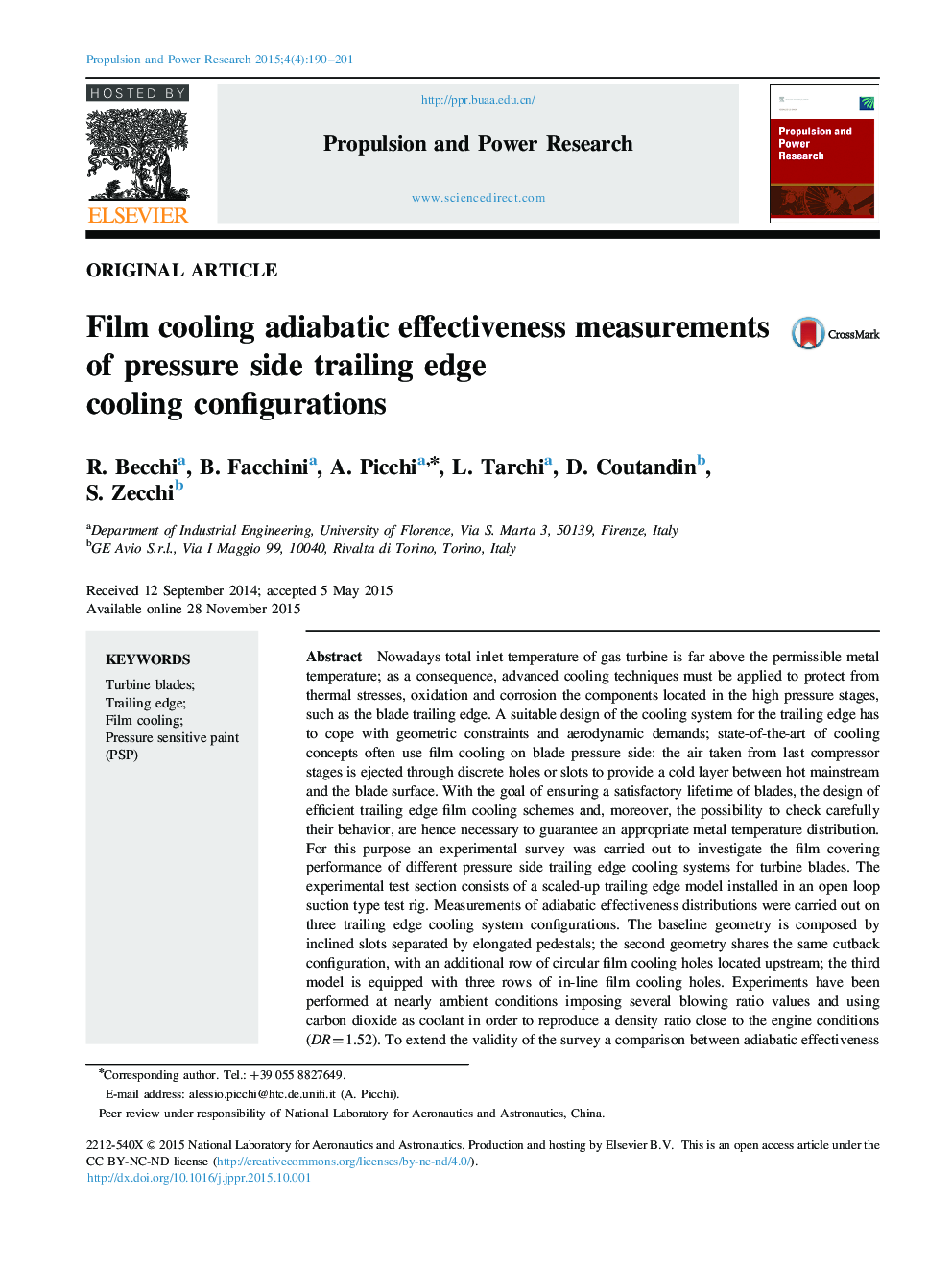| کد مقاله | کد نشریه | سال انتشار | مقاله انگلیسی | نسخه تمام متن |
|---|---|---|---|---|
| 1719648 | 1014204 | 2015 | 12 صفحه PDF | دانلود رایگان |
Nowadays total inlet temperature of gas turbine is far above the permissible metal temperature; as a consequence, advanced cooling techniques must be applied to protect from thermal stresses, oxidation and corrosion the components located in the high pressure stages, such as the blade trailing edge. A suitable design of the cooling system for the trailing edge has to cope with geometric constraints and aerodynamic demands; state-of-the-art of cooling concepts often use film cooling on blade pressure side: the air taken from last compressor stages is ejected through discrete holes or slots to provide a cold layer between hot mainstream and the blade surface. With the goal of ensuring a satisfactory lifetime of blades, the design of efficient trailing edge film cooling schemes and, moreover, the possibility to check carefully their behavior, are hence necessary to guarantee an appropriate metal temperature distribution. For this purpose an experimental survey was carried out to investigate the film covering performance of different pressure side trailing edge cooling systems for turbine blades. The experimental test section consists of a scaled-up trailing edge model installed in an open loop suction type test rig. Measurements of adiabatic effectiveness distributions were carried out on three trailing edge cooling system configurations. The baseline geometry is composed by inclined slots separated by elongated pedestals; the second geometry shares the same cutback configuration, with an additional row of circular film cooling holes located upstream; the third model is equipped with three rows of in-line film cooling holes. Experiments have been performed at nearly ambient conditions imposing several blowing ratio values and using carbon dioxide as coolant in order to reproduce a density ratio close to the engine conditions (DR=1.52). To extend the validity of the survey a comparison between adiabatic effectiveness measurements and a prediction by correlative approach was performed to compare the experimental results with 1D methodologies.
Journal: Propulsion and Power Research - Volume 4, Issue 4, December 2015, Pages 190–201
